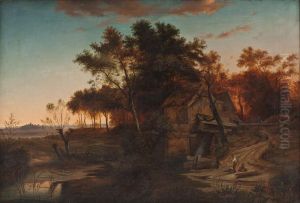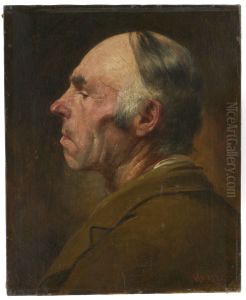Alois Hauser Paintings
Alois Hauser was a German painter and graphic artist born in 1909, whose work spanned much of the 20th century, a period marked by tumultuous changes in art, politics, and society. Though not as widely recognized as some of his contemporaries, Hauser's contributions to art, particularly in the realm of expressionism and post-expressionism, provide a fascinating insight into the evolution of modern art in Europe. His body of work includes a diverse range of media, including oil paintings, watercolors, and etchings, reflecting the broad scope of his artistic exploration.
Hauser's early career was significantly influenced by the artistic movements of his time, especially expressionism, which sought to convey emotional experience rather than physical reality. This influence is evident in his early works, characterized by bold colors, dynamic compositions, and a sense of emotional urgency. However, as his style evolved, Hauser began to incorporate elements of post-expressionism, demonstrating a more nuanced approach to form and color, and often exploring themes of human isolation and existential angst. Despite the changing trends in art throughout his career, Hauser remained committed to exploring the depths of human emotion and the complexities of the human condition.
Throughout his life, Alois Hauser faced the challenges common to many artists of his generation, including the impact of World War II and the subsequent division of Germany. These experiences informed his work, imbuing it with a sense of tragedy and resilience that resonates with viewers even today. Hauser's contributions to art were recognized in his time through various exhibitions and awards, though he never achieved the fame of some of his contemporaries. He continued to work and evolve as an artist until his death in 1984, leaving behind a legacy that, while perhaps underappreciated, offers valuable insights into the artistic and cultural landscape of 20th-century Europe.


